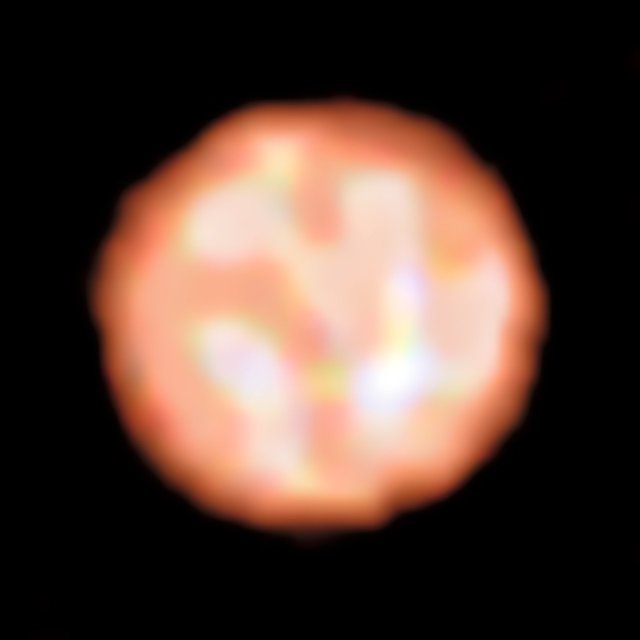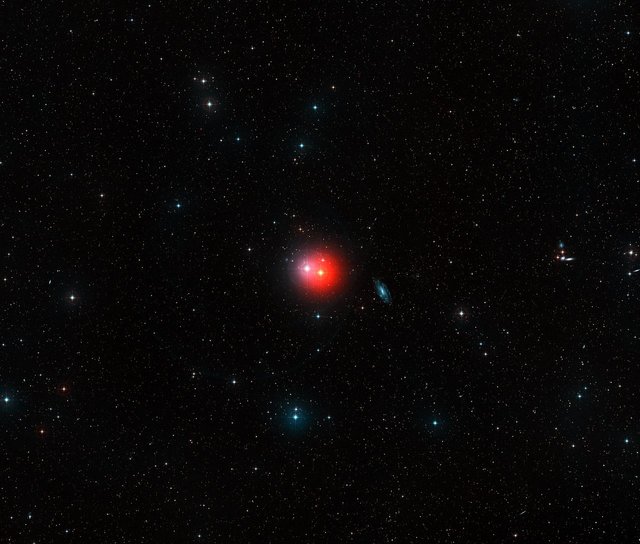Gigantic bubbles on Red Giant’s surface
For the first time, granulation patterns have been observed by astronomers on the surface of a red giant named π1 Gruis, using VLT telescope and PIONIER instrument.π1 Gruis is a huge, cold, red giant with a diameter 350 times larger than our Sun. A single pattern on the surface measures about 120 millions km across and covers ¼ of the entire star surface. π1 Gruis is located 530 light years from Earth in a constellation of Grus.
This red giant has about the same mass as Sun, but it's much bigger and brighter. In 5 billion years, Sun will swell and become a similar red giant. Until it happens, scientists still have some time to study this process from a safe distance. New surveys, which were made using VLT and PIONIER, revealed a surface of π1 Gruis in great details. Astronomers have found that a few convective cells (granules) can be observed on the surface, each of them about 120 millions km across. A single granule would extend from the Sun beyond the Venus orbit.
π1 Gruis ran out of its hydrogen fuel a long time ago and completed the first phase of its nuclear fusion process. When it ran out of energy, it shrank. Because of that, the temperature of π1 Gruis reached 100 million degrees. High temperature made a fusion of helium into the heavier elements possible. As the aftermath, the outer star layers were expelled and π1 Gruis pumped itself up to a much bigger size.
The Sun's photosphere contains about two millions of convective cells with a diameter of 1500 km. The differences can be explained by varying surface gravities between the Sun and the red giant. π1 Gruis is much bigger than the Sun, but only 1.5 times heavier, resulting in a much lower surface gravity and therefore much bigger granules.
Stars with a mass exceeding eight solar masses end their lives as supernovae. Less massive stars, like π1 Gruis, die slowly by expelling their outer layers, resulting in planetary nebulae. Previous studies found a shell of matter 0.9 light years from π1 Gruis. It is suspected that it has been ejected about 20 000 years ago.
If you find this post useful, please consider following our profile @technocracy


It is great to have You on Steemit! :)
Thank you @noisy for recommendation ;) We will do everything to not disappoint you and your followers.
This stuff always fascinates me. Welcome to Steem. I look forward to following you and hearing what you have to say. @noisy is a great guy to have recommend you....Good Luck!!!
Thanks ;) We encourage everyone interested in new technologies, to follow us. You can expect only high quality content. And we have ESA's press accreditation, so you gonna get latest news as fast as possible ;)
Great thank you for sharing this great pictures and infos. Everytime I hear this large numbers like 300 times bigger than the sun just blows my mind.
Well... those things can blow our minds for sure ;)
I love to read your post is very educative